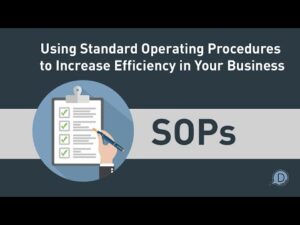In this episode we discuss value-based pricing. Flat rate and hourly pricing are probably the more well known types of pricing structures but there are other methods used in businesses. Competitive and cost-based are other types we touch on. Some good info here!
Hosts Present:
- David Blackmon – Aspen Grove Studios / FB / @aspengrovellc
- Cory Jenkins – Aspen Grove Studios / FB / @aspengrovellc
- Tim Strifler – Divi Life / FB / @timstrifler
- Shannon Shaffer – Purple Finch Studios / FB / @purplefinchfoto
- Leslie Bernal – A Girl and Her Mac / FB / @agirlandhermac
- SJ James – divi.space / FB / @sociallysteve
Resources Mentioned:




Great topic and spirited debate! Love the podcast!
Value-based pricing is something my team’s been grappling with recently, as we’re an outfit offering clients full-spectrum communications solutions. How do we maximize profits while staying competitive, offering multiple services for varied industries and regional markets?
Here’s my current thoughts on our possible new sales funnel. I could be really out to lunch here. Would love some feedback!
1. Approach clients with at least a basic understanding of their region and industry. Speaking their language and knowing their pain points allows for a trusting relationship to begin.
2. During the exploratory phase, don’t introduce costs, features or benefits. Focus on the pain points and aspirations for their business.
3. Devise a goal with the prospective client, so you both can envision true value for your services: (e.g. 50 new customers per month over 12 months). This helps position you to offer a tailored solution.
4. Understand the regional market you’re targeting. What are others charging for a similar solution locally? This may or may not factor into your pricing equation. If the client will happily spend twice the amount with you over the competition based on your understanding of their needs/aspirations, why match the marketplace? Yet also consider market prices could be set for solid reasons. The hard work of market analysis could already be done for you.
4. Offer a tailored solution that falls inline with the prospect’s aspirational goal, pricing it based on a shared, quantified value: (e.g. 50 customers x $50 spend each x 12 months = $30,000 ROI). How about charging 10% of that ROI @ $3,000? 10% is half (or less) the typical marketing budget for only that new business brought in through your services! If say their annual revenue is $120,000, they’re investing 2.5% for a 25% profit increase potential!
5. Have additional products/services to offer. Perhaps it’s custom photography, graphic design, maintenance plans, social media marketing, etc. It could even be recommending the services of others, who in return send you business. True value for clients is expanding their business and exceeding their expectations, while their true value to you is recurring (passive?) income.
6. Create a profile of the client based on industry/demographic/psychographic elements to help with future sales leads. This helps develop ideal marketing strategies, targeting more affluent customers who don’t nickel-and-dime and expect much more for much less investment. It’s ideal to start this process before approaching them in the first place.
7. Follow-up with the client to ensure your shared goal is on-track, and tweak accordingly. This may result in selling more services and deepening your business relationship. If things are going well, ask them to spread the word!
Anyway, this is just a brief overview. I think it’s a value-based approach which focuses on customer needs and goals, and less on a cost-based service commodity which is ultimately (or arguably) a race to the bottom. I feel you’ll get less resistance and higher-quality clients if the cost equation is the last consideration (for clients) in the sales process.
Following this model you may find 10% (or whatever) of the customers ROI goal doesn’t cover your expenses and profit margin. If so, why not decline the job or raise your ask to 20%? Even at $6,000 in the above scenario, you’re asking 1/5th of their likely marketing budget.
Do you think this is an off-base strategy? Thanks for reading!
Hi Josh,
Thanks for sharing your insights. I definitely think this isn’t unrealistic at all. I think the goal is showing the potential client the true value of what your offering. In your example a clear return on their investment. If anything I feel it is potentially under-valued here and you could/should ask for 15-20%.
That’s only the first year, how much exponential income will that bring in over time? I would love to know if anyone has tracked something similar over say a 5-year margin.
Appreciate the reply David,
I hope you’re on-point and 15-20% is an appropriate ask! Just to be clear, are you saying 15-20% of total revenue, 15-20% of the marketing budget, or 15-20% of total new revenue based on our shared goal?
I’ve done a little digging, and please correct me if I’ve made some erroneous assumptions based on what I’ve come across. I’ll post my sources at the end:
1. The average marketing spend for online channels has increased by single digits year-on-year.
2. The average marketing budget ranges from 7.5% – 11%. These numbers may be skewed heavily towards businesses earning $25+ million.
3. If there is a “magic number” for marketing, it’s 10%. Googling different keywords like “average marketing budget percent” offers that 10% figure at the top of search results.
4. Some industries, especially Tech and B2C spend the highest average of 15%-25%. That number can reach 50% for start-ups.
5. The average marketing budget spend on website design is 9%. For those relying heavily on online for sales, website design spending increases to 14%.
6. Online should no longer be considered another marketing channel, but integral to the customers journey in every industry. Business owners need to be educated on this to increase their online spend. The challenge lies in the numbers. It’s hard to build a case as many businesses show marginal increase in sales based on social media spend.
Assuming that the above numbers are accurate, HERE’S AN UPDATED breakdown of my example:
a) $24,000 Marketing Budget is 20% of $120,000 Revenue. That’s the average marketing spend for an established B2C business which relies on rich online content. That number doesn’t seem drastic even for small businesses if we’re creating the goal of $30,000 increase in revenue (25% profit margin above marketing budget).
b) $3,600 Website Design is 15% of $24,000 Marketing Budget. That’s the average website design spend for those relying on rich online content. The remainder would go to Social Media advertising, SEM, offline channels, etc.
c) Understanding the Quote: $3,600 is 3% of $120,000 Revenue; It is 15% of $24,000 Marketing Budget; It is also 12% of $30,000 New Profit.
d) Let’s assume the business owner won’t divulge their Annual Revenue or Marketing Budget, only our shared Profit Increase goal of 25%. This relies on them giving us a monetary figure.
e) Let’s use David’s numbers and ask 20% (instead of 12%) of $30,000 New Profit. The new Quote = $6,000.
NOTES:
-These totals for a Quote are near identical to my original formula, but are now (supposedly) based on solid industry research.
-David’s 20% ask seems very feasible, and not far from what a business might expect if they do their own research. Also, helping them envision exponential income over time makes it an easier sell.
-It’s very simple if you only know the profit increase potential … 20% of Profit Increase Goal = Your Web Design Quote.
-If you go with that extremely simple formula (20% of Profit Increase Goal), you don’t need to know Revenue/Marketing Budget/Industry Average Spend, or create a complex equation for each Quote.
-Some businesses may not be targeting a profit increase, only building their brand and authority. In those cases a shift from Value-Based (profit increase, service reliability) to Cost-Based (industry/region average spend) may be appropriate.
Sources:
https://vtldesign.com/digital-marketing/content-marketing-strategy/percent-of-revenue-spent-on-marketing-sales/
https://www.webstrategiesinc.com/blog/how-much-budget-for-online-marketing-in-2014
http://deloitte.wsj.com/cmo/2017/01/24/who-has-the-biggest-marketing-budgets/
https://soundcloud.com/alecmarshall/qlutch-ceo-jim-sagar-interviews-brian-solis
http://www.gartner.com/smarterwithgartner/gartner-cmo-spend-survey-2016-2017-shows-marketing-budgets-continue-to-climb/
Also David, this article offers some Website ROI calculation: https://www.orbitmedia.com/blog/website-roi-return-investment-redesign/
I’d love to see more episodes on the sales process. It’s fascinating to see the different approaches. I’ve recently scraped my regional online business directories and have over 7,000 local businesses categorized in a spreadsheet. The plan is to cold-call as many as possible with a phone script shaped around Value-Based pricing by targeting pain points. We’ll be starting the calls tomorrow!
Thanks for sharing Josh. Your comments strike a chord with me because I felt like website design was often being treated like a commodity on this episode, and this is so NOT true. You hit the nail on the head re: Value-based pricing. Figure out what the client’s goals are. Then figure out what meeting those goals is worth to them. Then focus your pitch (and your pricing) on the value the client gets if your website helps them meet those goals.
Incidentally, I sometimes buy child themes and I hardly ever consider the price. Whether it is $50 or $150, the value of the time saved during the site design phase is huge. The $100 price difference is inconsequential. Same thing with a plugin if it does what I need it to do.
Maybe a future podcast could focus on how to sell a website project. Lots of meat in that topic, and if you can differentiate yourself from the other developer down the street (or across the globe), you will definitely be able to charge more.
Another way to avoid commodity-priced websites? Niching. Show someone you understand their specific industry and your expertise will be worth more. Again, more value.
Thanks for the podcast guys! Keep up the great discussions.